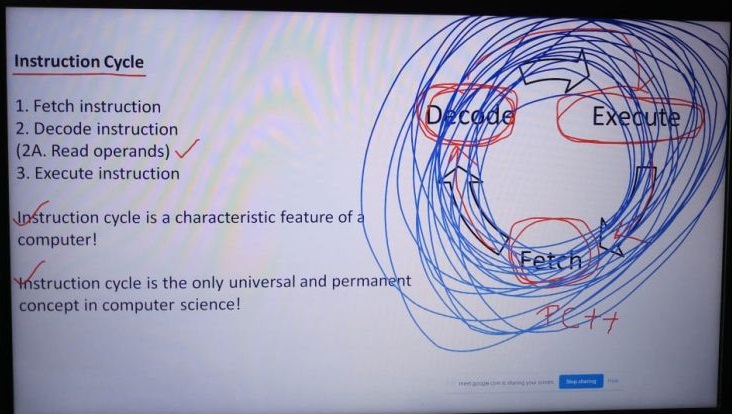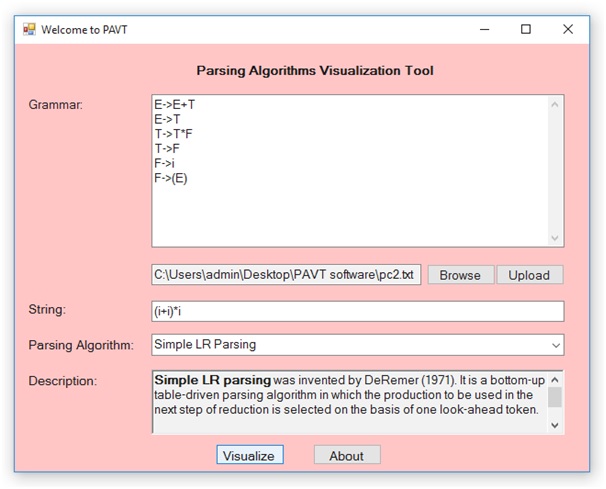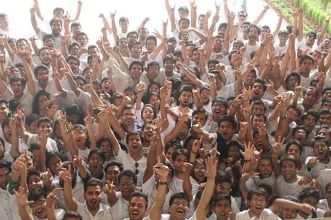
Dr. Pinaki Chakraborty received his B.Tech. from Indraprastha University, and his M.Tech. and Ph.D. from Jawaharlal Nehru University. He teaches courses on compiler construction, operating systems and computer architecture. His area of research includes educational software, human-computer interaction and societal applications of digital technologies.
- Teaching Style (Click to expand)

Getting carried away while teaching. 
Bringing software in the classroom. 
Taking students out of the classroom, occasionally.
- Sample Publications (Click to expand)
-
- Kanika, Chakraverty, S. and Chakraborty, P. 2022. Effect of different grouping arrangements on students’ achievement and experience in collaborative learning environment. Interactive Learning Environments, in press.
- Yadav, S., Chakraborty, P. and Mittal, P. 2022. A mathematical model for suitability of smartphone apps for children. Human Behavior and Emerging Technologies, in press.
- Yadav, S., Chakraborty, P. and Yadav, S. 2022. A model for teaching geometry to schoolchildren using smartphone app. Presnted in: International Conference on Electrical, Electronics, Information and Communication Technologies. [Best Paper Award]
- Yadav, S., Chakraborty, P., Jain, K. and Jyotirmaya. 2021. A user centered design approach to develop a mobile app for children. Proceedings of the The International Conference on Computational Performance Evaluation, pp. 54-58. [Best Paper Award]
- Chakraborty, P., Mittal, P., Gupta, M. S., Yadav, S. and Arora, A. 2021. Opinion of students on online education during the COVID-19 pandemic. Human Behavior and Emerging Technologies, 3(3): 357-365.
- Chatterjee, I. and Chakraborty, P. 2021. Use of ICT by medical educators amid COVID-19 pandemic and beyond. Journal of Educational Technology Systems, 49(3): 310-324.
- Yadav, S. and Chakraborty, P. 2021. Child-smartphone interaction: Relevance and positive and negative implications. Universal Access in the Information Society, in press.
- Yadav, S. and Chakraborty, P. 2021. Children’s ability to engage in video chatting: Expressiveness, recall and problem solving. Journal of Human Behavior in the Social Environment, in press.
- Yadav, S., Chakraborty, P. and Mittal, P. 2021. Designing drawing apps for children: Artistic and technological factors. International Journal of Human-Computer Interaction, in press.
- Arora, A., Chakraborty, P. and Bhatia, M. P. S. 2020. Analysis of data from wearable sensors for sleep quality estimation and prediction using deep learning. Arabian Journal for Science and Engineering, 45(12): 10793-10812.
- Chakraborty, P., Singh, T., Sharma, J. and Chakrabarti, R. 2020. Formulation of fish feed with multiple ingredients using a software tool developed in Java. Journal of Aquaculture in the Tropics, 35(1-4), 149-165.
- Kanika, Chakraverty, S. and Chakraborty, P. 2020. Tools and techniques for teaching computer programming: A review. Journal of Educational Technology Systems, 49(2): 170-198.
- Rodriguez-Sanchez, M. C., Chakraborty, P. and Malpica, N. 2020. International collaborative projects on digital electronic systems using open source tools. Computer Applications in Engineering Education, 28(4): 792-802.
- Stamenkovic, S., Jovanovic, N. and Chakraborty, P. 2020. Evaluation of simulation systems suitable for teaching courses on compiler construction. Computer Applications in Engineering Education, 28(3): 606-625.
- Agarwal, C. and Chakraborty, P. 2019. A review of tools and techniques for computer aided pronunciation training (CAPT) in English. Education and Information Technologies, 24(6): 3731-3743.
- Chakraborty, P., Arora, U., Mukhija, N., Goel, V., Priyanka, Shikhar, S. and Takhar, R. 2019. OSAVA: An Android app for teaching a course on operating systems. Journal of Engineering Education Transformations, 32(4): 20-30.
- Singh, T., Afreen, S., Chakraborty, P., Raj, R., Yadav, S. and Jain, D. 2019. Automata simulator: A mobile app to teach theory of computation. Computer Applications in Engineering Education, 27(5): 1064-1072.
- Sangal, S., Kataria, S., Tyagi, T., Gupta, N., Kirtani, Y., Agrawal, S. and Chakraborty, P. 2018. PAVT: A tool to visualize and teach parsing algorithms. Education and Information Technologies, 23(6): 2737-2764.
- Gupta, T., Yadav, S. and Chakraborty, P. 2017. Compiler bootstrapping and cross-compilation. Current Science, 112(5): 906-907.
- Yadav, S. and Chakraborty, P. 2017. Children aged two to four are able to scribble and draw with a smartphone. Acta Paediatrica, 106(6): 991-994.
- Chakraborty, P., Saxena, P. C. and Katti, C. P. 2012. Automata simulators: Classic tools for computer science education. British Journal of Educational Technology, 43(1): E11-E13.
- Chakraborty, P., Saxena, P. C. and Katti, C. P. 2011. Fifty years of automata simulation: A review. ACM Inroads, 2(4): 59-70.
- Chakraborty, P. and Chakrabarti, D. K. 2008. A brief survey of computerized expert systems for crop protection being used in India. Progress in Natural Science, 18(4): 469-473.
- Chakraborty, P. 2007. A language for easy and efficient modeling of Turing machines. Progress in Natural Science, 17(7): 867-871.
- Chakraborty, P. 2007. An assortment of methods for mining dense substructures in a large graph. In: Proceedings of the National Conference on Information Technology: Present Practices and Challenges, pp. 497-501. [Best Paper Award]



